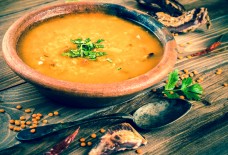Singer Lamjarred Exports Moroccan Dialect to Arab World
SOURCE: FORBES
BY: ALISON LAKE
Just a short ferry ride from Spain across the Strait of Gibraltar, Morocco is richly influenced by old Andalusia, nomadic Saharan rhythms and Berber traditions. The repertoire of popular Moroccan singer Saad Lamjarred reflects that cultural fusion, in a contemporary style with elements of hip-hop and Western popular music.
Lamjarred’s success has stemmed in great part from his ability to please Moroccans by adding distinctly local touches to his music, while exporting Moroccan symbols and dialect to a broader public using a commonly understood language.
Saad Lamjarred in a June 4, 2018 Instagram post promoting his song “Ya Allah”
Moroccan music has a distinct type of syncopation, said ethnomusicologist Tim Abdellah Fuson of Albany, Calif. “What gives the rhythms their particular flavor, and what makes them sometimes a barrier to non-Maghrebis, is not just the syncopation, but also the fact that the low-pitched drum stroke, or ‘dum,’ does not fall at the beginning of the measure.
“The beginning of the measure is typically a high-pitched stroke, or ‘tek.’ This is very different from eastern Arab rhythmic patterns, where the ‘dum’ falls at the beginning of the measure.”
Lamjarred’s songs with greater Moroccan influence gently employ that rhythmic style, Fuson said. These include “Salina Salina” (“We’re Finished”), “L’Mmima” (“My Mom”), “Mal Hbibi Malou” (“What Wrong with My Love”) and “Wala Alik” (“Don’t Worry”).
It was his 2014 breakout hit “Enty Baghya Wahed” (“You Want Someone”) with producer DJ Van that pushed Moroccan music beyond the kingdom’s borders and gave Lamjarred a unique new sound. “It’s a mix of urban rhythm and traditional 6/8 syncopation, and Moroccan with Khaliji [Gulf] ways of singing,” said Van, who also goes by Khalil Belkas.
But three years after its release, “Lmaalem” (“The Boss”) continues to be Lamjarred’s most popular song. Visually and rhythmically, it’s signature Moroccan.
Filmed outside Marrakech and directed by Amr Rouani of the popular Moroccan television series “L’Couple,” the video uses national symbols such as the tarbouche, the djellaba—a traditional robe worn by men and women—and the ubiquitous motor scooter that clogs the streets of Marrakech.
Rouani said “Lmaalem” is inspired by Moroccan artisans and others who create things with their hands—tailors, shoemakers and hatmakers, who are traditionally called “lmaalem.” “They invented these items that are now everywhere in Moroccan culture, such as the caftan, belgha [slippers] and the tarbouche,” he said.
“Lmaalem” is thoroughly modern with millennial clothing and hip-hop dance moves. Yet it also links generations and honors those artisanal masters with an octogenarian sporting Beats headphones (Rouani’s father) and a veiled grandma rapping the wheel of her sewing machine.
“Most people make videos just with beautiful young people, but I also decided to highlight the older generation in meaningful moments in the video to show these leaders are truly ‘the bosses,’” Rouani said.
Dancers from a variety of ethnic backgrounds and Bollywood-style choreography cement the video’s international appeal. Rouani said he likes to feature a mix of Moroccans and foreigners in his videos because “Morocco is multicultural. Most families have a European relative by marriage.”
Rouani also directed Lamjarred’s 2017 video “Ghaltana” (“You’re Wrong”). The video has a Wild West, gritty feel, inspired by Rouani’s childhood love of “Mad Max” films.
“I deliberately filmed it in the Moroccan Sahara to emphasize to the world” that the disputed territory known internationally as Western Sahara is “100 percent Moroccan,” he said. “In all my work, I add in cultural touches to show the world Morocco is not just about camels.”
Rouani and Lamjarred worked with a guitarist who mixed rock-and-roll with Arabic melodies.
Lamjarred’s more recent dance hit “Ghazali” blends a Latin American flair with Moroccan folk rhythms and costumes.
Bassim Bendellah, a music booker in Marrakech who arranged concerts for Lamjarred before he stopped performing in public, noted that the singer’s team wanted to reach an international audience with “Ghazali.”
“It has an African beat with Moroccan clapping like the traditional music genre we call ‘dakka marakechiya,’ but Saad enhanced the song by adding sounds like the saxophone,” Bendallah said.
“‘Ghazali’ is mostly in Darija with small touches of classical Arabic and English. Saad chose this dialect because he is trying to export Moroccan culture to the world,” he said. The word “ghazali” is a typical Moroccan term of endearment for a pretty woman, literally meaning “doe.”
“The song is about the Arab woman, and the women featured in the clip are Moroccan, French and Asian, and others,” Bendallah said. The video’s main love interest, Mariam Rod, is Kurdish-Persian.
Lamjarred’s music even draws fans who don’t understand any of the language, save his occasional use of English, and universal words in Muslim countries, like “habibi” for “dear.” Mubashar Hassan of Centreville, Va., said, “I heard about him and his songs when I went back home to my country [Pakistan]. I don’t really understand his songs, but I like his music.”
“It’s new-generation music,” said Mahjouba Lekbad, an Algerian living in Sterling, Va. “His music seems more international than Moroccan. He uses some English words and gets his style of performing from American singers, like his latest video ‘Let Go.’”
Lekbad’s daughter, Sabrina, 10, said she loves his songs, especially “Mal Habibi” [“What’s Wrong with My Love”] and “Let Go.”
Brahim Rachiki, a Moroccan choreographer, model and dancer who acted in the recent film “Beirut” and choreographed and danced routines for Michael Jackson, Janet Jackson and Madonna, appeared in “Ghaltana” and other Lamjarred performances.
“Saad shows that traditional and modern music can be mixed in a good way,” said Rachiki, who was born in Belgium and lives in Los Angeles. “Every generation has its conflicts between parents and children, but he merged that, and his music appeals to children and all people.
“Even if you don’t understand all the lyrics, you can really dance to it. And because of him, now people know Morocco and our own kind of slang language.”



